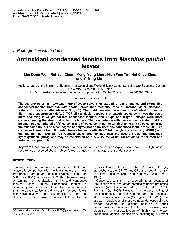摘要
The acetone-water (1:1, v/v) was more effective solvent for extracting total phenolics and extractable condensed tannins from Machilus pauhoi leaves than methanol, ethanol, acetone, water, methanol-water (1: 1, v/v), and ethanol-water (1: 1, v/v). The matrix-assisted laser desorption/ionization time-of-flight mass spectrometry (MALDI-TOF MS) analysis revealed that catechin/epicatechin was the basic units occurring in M. pauhoi leaf condensed tannins, and A-type and B-type linkages were most common among the structural units of polymers. Thiol degradation with cysteamine indicated that the polymer was constituted of (+)-catechin and (-)-epicatechin as the terminal units and (-)-epicatechin as the extension units. The mean degree of polymerization (mDP) of the condensed tannins was 6.96. The condensed tannins from M. pauhoi leaves had more effective 2,2-diphenyl-1-picrylhydrazyl (DPPH) and diammonium salt (ABTS) free radicals scavenging abilities than the ascorbic acid and butylated hydroxyanisole (BHA), and may be considered as a new source of natural antioxidants for food and nutraceutical products.
- 出版日期2011-3-4
- 单位厦门大学
